Introduction
Amazon Web Services (AWS) and Microsoft Azure are two leading cloud computing platforms revolutionizing the way organizations construct, deploy, and administer cloud-based applications and infrastructure. With their robust services and extensive features, AWS and Azure cater to diverse business needs and offer a wide range of cloud computing models. In this article, we will explore the various services provided by AWS and Azure, compare their offerings in compute, storage, database, networking, security, big data and analytics, machine learning and AI, pricing, data center infrastructure, industry suitability, hybrid cloud solutions, open-source support, compliance, and regulatory considerations.
By understanding the strengths and considerations of each platform, organizations can make informed decisions to leverage the power of cloud computing and drive efficiency and innovation in their operations.
Overview of AWS and Azure Services
Amazon Web Services (AWS) and Microsoft's cloud offerings are at the forefront of cloud computing, providing robust platforms for organizations to construct, deploy, and administer applications and infrastructure in the cloud. AWS, a division of Amazon, has established a specialized position for itself as a leader in cloud solutions, offering APIs and computing services to a diverse clientele, including government agencies, private companies, and individuals. It is acclaimed for its flexibility and cost-effectiveness, allowing businesses to tailor their online storage and computing power based on their own growth trajectories.
Microsoft's cloud platform, known as Azure, provides a distinct combination of offerings that address various business requirements. Like AWS, Azure boasts high availability, with an extensive network of data centers worldwide to ensure data redundancy and recovery. It highlights fault tolerance, enabling ongoing functionality by redirecting workloads to healthy servers in the event of a failure, thereby ensuring seamless disaster recovery.
Both platforms are designed to assist a range of cloud computing models like public, private, and hybrid environments, and provide a variety of offerings within these paradigms. These offerings encompass IaaS, PaaS, SaaS, and serverless computing, each selected based on the specific IT investments, business demands, and desired outcomes of an organization.
For example, AWS's Amazon EC2 (Elastic Compute Cloud) is crucial in offering scalable computing resources in the sky, reflecting the 'brain' of computing by handling processing tasks. Similarly, AWS's serverless offerings, like AWS Lambda, enable on-demand compute operations, freeing developers from server management.
Similarly, the incorporation of MathWorks' MATLAB and the machine learning functionalities within Microsoft's cloud computing platform, along with advancements such as Azure's Jupyter Managed offering, showcase their dedication to delivering advanced analytics and machine learning workbenches.
Recent developments in AWS have also seen the introduction of new capabilities within AWS Supply Chain, designed to aid customers in data analysis and management at scale while simplifying operations. Services now include forecasting, product replenishment optimization, and improved supplier communication.
The strategic implementation of online computing solutions is crucial for businesses looking to stay flexible and creative. With AWS and another leading the charge, organizations are equipped with the tools necessary to navigate the complexities of modern computing, driving efficiency, productivity, and ultimately, success.
Compute Services Comparison
Both AWS and another cloud platform offer robust compute solutions tailored to meet different business needs. AWS’s Elastic Compute Cloud (EC2) provides a comprehensive environment to launch and manage virtual machines, offering a range of instance types suitable for various applications. Azure’s Virtual Machines (VMs) compete in this area, with a focus on ease of integration with Azure’s set of online services.
Utilizing the online platform for computing enables organizations to leverage potent, flexible, and adaptable infrastructures that are updated with the latest hardware advancements. Choosing to use cloud-based solutions frequently involves a payment structure that allows for payment based on usage, transitioning from upfront costs to ongoing expenses and linking expenses directly to usage. This model is particularly beneficial for companies that experience variable workloads, providing the flexibility to scale resources according to real-time demand.
When deciding between developing in-house solutions or purchasing external offerings, organizations need to evaluate the trade-offs. Mature development teams might favor building custom solutions when the process is not overly time-consuming or resource-intensive. On the flip side, procuring services can be advantageous for many organizations, as it transfers the responsibility of scale and maintenance to the cloud provider, enabling teams to focus on core business objectives.
Additionally, it’s important to recognize that the choice of compute option is not one-size-fits-all. As emphasized by research organizations utilizing AWS for high-performance computing (HPC) workloads, such as drug discovery and genomics, the determination on which option to utilize relies on specific workload requirements. Factors like the requirement for closely connected procedures, containerization, machine learning capabilities, or cloud-based desktops are vital in choosing the suitable option.
Furthermore, the accessibility of the skies enables organizations to shift from operating on-premises servers to utilizing cloud services, albeit with a learning curve. This transition may be more challenging for organizations with legacy applications that have specific hardware or licensing needs, or those facing regulatory or data residency requirements that dictate data must remain within certain geographical boundaries.
With ongoing innovations and announcements, such as those expected from events like AWS re:Invent, both AWS and the other cloud provider continue to evolve their offerings. It is imperative for organizations to stay informed on the latest developments to make educated decisions that align with their strategic goals and operational needs.

Storage Services Comparison
Data storage is a crucial consideration for any organization looking to leverage cloud computing to its fullest extent. Both AWS and another cloud provider offer robust storage solutions designed to meet a wide array of business needs, each with unique features, performance, and pricing models. AWS's Simple Storage Service (S3) is an industry leader in cloud storage, offering scalable and cost-effective solutions. However, with the increase in data storage needs outpacing the reduction in costs, it's crucial to use S3 intelligently to avoid unexpected expenses. On the contrary, a suite of storage services from Microsoft's cloud platform is especially suitable for modern applications that need extensive scalability and security, like the worldwide accessibility of databases and unstructured data storage.
The importance of a storage solution that can rapidly scale to meet fluctuating demands cannot be overstated. In scenarios where businesses experience unpredictable growth, it's essential to have a storage system that can adapt without incurring prohibitive costs. This platform addresses this by providing secure access, customer-managed keys, and time-based retention policies, ensuring that scalability does not come at the expense of security or compliance.
In the competitive tech landscape, the incorporation of AI into storage and data solutions is becoming increasingly important. The platform has shown a dedication to improving itself with AI-powered solutions, making it easier to migrate to the cloud. In the last year, there has been significant growth in the storage and data services, highlighting the crucial role AI plays in managing and analyzing an expanding data estate.
When selecting between AWS and another cloud platform for your storage needs, it's crucial to assess the specific requirements of your project, whether that includes machine learning capabilities, IoT integration, or compatibility with existing infrastructure. Security and compliance are also paramount, as both platforms offer strong security features that must align with industry regulations such as GDPR. Additionally, flexibility and scalability should be considered alongside your anticipated growth and budget constraints.
Industry experts emphasize that while flash technology is suited for real-time data transfer applications, hard drives remain the primary storage medium in data centers due to the reality of workload demands. Most workloads in data centers do not require the performance level that flash provides, making hard drives a cost-effective and practical solution for most storage needs.
In summary, both AWS and another cloud computing platform offer comprehensive storage options that cater to different operational requirements and objectives. With the advancement of computing and storage technologies, accompanied by the transformative impact of AI, it's crucial for organizations to select a platform that not only fulfills their current needs but is also prepared to tackle future challenges and opportunities.
Database Services Comparison
Cloud databases play a pivotal role in managing the deluge of data generated by modern applications, from e-commerce platforms to enterprise software. AWS and another major cloud provider, as top cloud platform options, provide a range of database offerings designed for various application requirements. AWS's selection includes Amazon RDS for relational databases, Amazon DynamoDB for NoSQL solutions, and Amazon Redshift for data warehousing. Conversely, Azure counters with Azure SQL Database, Azure Cosmos DB also for NoSQL requirements, and Azure Synapse Analytics for extensive data warehousing.
AWS databases are renowned for their broad spectrum, addressing various use cases from conventional relational databases to state-of-the-art NoSQL and graph databases. The challenge of predicting exact resource requirements for scalable database offerings has led to the adoption of flexible designs that can swiftly scale to match real-time usage patterns, especially in stateless solution scenarios. This flexibility ensures that database operations can maintain performance without compromising cost efficiency.
Real-world applications highlight the significance of selecting the appropriate database option. For instance, Microsoft's detailed profile of Octo Tempest, a formidable hacking group, underscores the need for robust database security features. The offerings from Microsoft's cloud platform are particularly noteworthy in the realm of security, providing powerful tools to safeguard data against sophisticated threats.
In the competitive landscape, the database management systems market is poised for significant changes by 2030. With the need for actionable insights to identify new revenue opportunities and strategic business decisions, understanding market drivers, restraints, and future trends is crucial for any organization. The market is expected to evolve with a focus on segments that will exhibit the most growth, challenging database providers to adapt and innovate continuously.
Choosing between AWS and Azure for database options requires evaluating the advantages and disadvantages of each provider's offerings. Organizations need to take into account factors like scalability, performance, and managed capabilities, and also how these offerings integrate with their current technology stack and business goals. By doing so, they ensure the selection of a database platform that aligns with their application requirements and strategic goals.
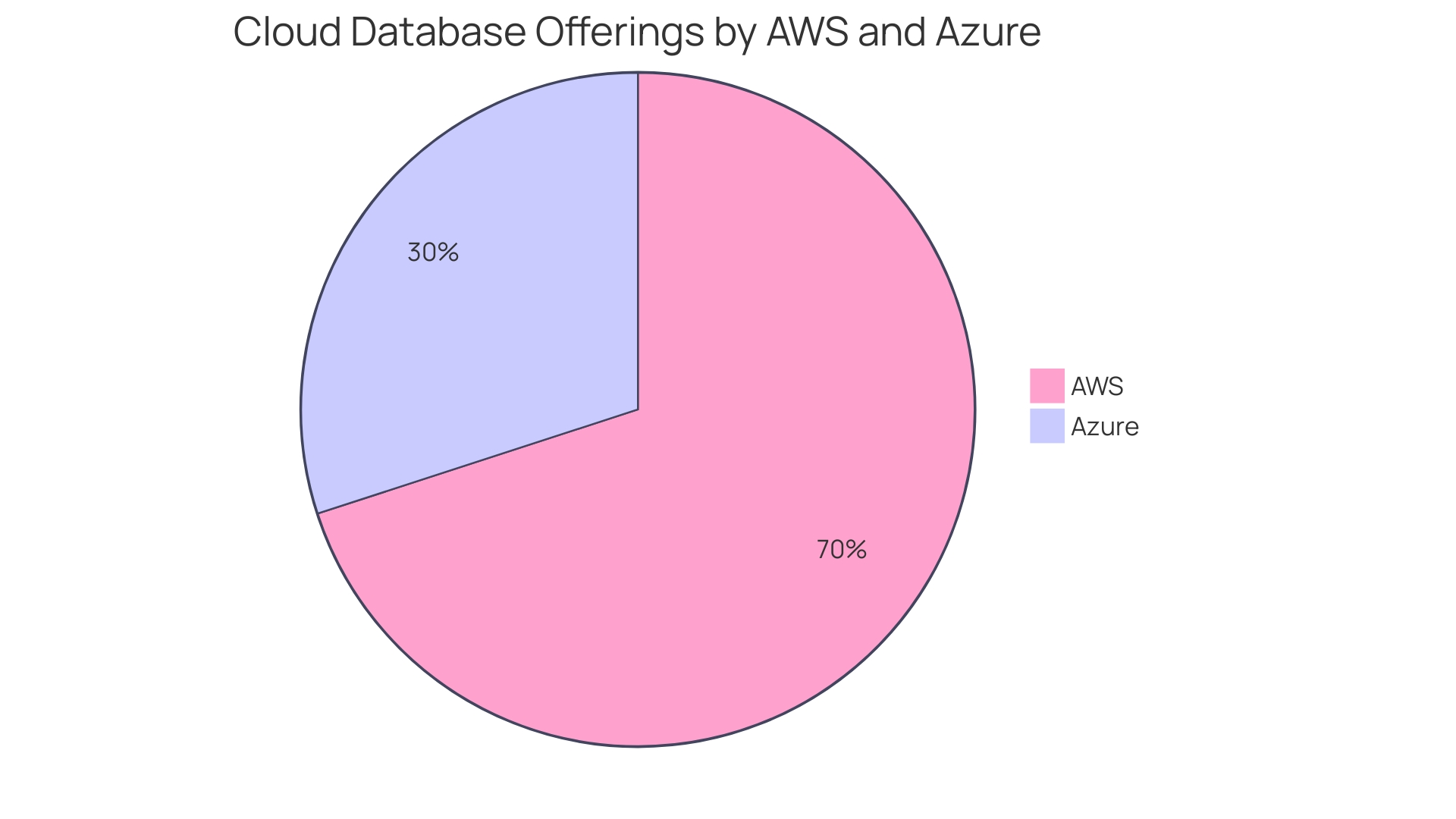
Networking Services Comparison
Cloud networking is an essential component that connects resources and users in a seamless, secure, and scalable manner. AWS and another leading cloud provider, two giants in the cloud industry, offer a variety of networking solutions designed to cater to different organizational needs. AWS's network offerings encompass the Amazon Virtual Private Cloud (VPC), which offers a segregated portion of the AWS infrastructure where you can deploy assets within a specified virtual network. Elastic Load Balancing distributes incoming application traffic across multiple targets, such as Amazon EC2 instances, containers, IP addresses, and AWS Lambda functions. Additionally, AWS Direct Connect bypasses the public internet and provides a private connection from an on-premises network to the AWS network.
The networking capabilities of Azure are just as strong, with features like Virtual Network that enable secure communication between resources, the internet, and on-premises networks. Azure Load Balancer provides high availability and network performance to your applications, and with ExpressRoute, you can extend your on-premises networks into the Microsoft environment over a private connection facilitated by a connectivity provider.
In the context of real-world application, companies like ICL have utilized network computing to monitor industrial equipment under challenging conditions, showcasing the adaptability and resilience of these solutions. The BMW Group, utilizing its Jupyter Managed service, showcases how networking in the cloud can support a code-centric analytics and machine learning workbench, highlighting the need for a network that is scalable, agile, and cost-effective.
The digital transformation wave has emphasized that the network is the backbone of cloud adoption and AI expansion, as noted by industry leaders. The importance of strong network defenses is highlighted by Cisco's trademark recognition and the recent DDoS attacks reported by BleepingComputer. When opting for a cloud platform, it is imperative to evaluate the specific needs of the project, the standards for security and compliance, and the flexibility and scalability of the network solutions provided by AWS and Microsoft's offering to ensure that the technology aligns with business objectives and supports growth. Fively recommends a tailored approach to cloud solutions, recognizing that while AWS may be preferred for its comprehensive features and robust security, the integration of Microsoft's cloud platform with their products and its unique offerings make it a strong competitor in the cloud ecosystem.
Security and Identity Services Comparison
Cloud platforms such as AWS and other providers are constantly improving their security and identity offerings to meet the requirements of organizations that prioritize safeguarding their data and resources. AWS's security solutions include AWS Identity and Access Management (IAM), AWS Key Management (KMS), and AWS Firewall Manager, each designed to provide strong security layers and user access management. Azure competes with its own suite of offerings including Azure Active Directory, Azure Key Vault, and Azure Security Center, which collectively work to safeguard applications and manage sensitive information in the sky.
The importance of these offerings is emphasized by the experiences of different organizations. For instance, the TR Labs team experienced heightened security requirements as their AI/ML model development expanded. Similarly, Dunelm Group plc's reliance on a secure digital platform for significant revenue generation, and BMW Group's emphasis on a secure analytics and machine learning workbench, exemplify the necessity of advanced security measures in scaling enterprises.
Recent advancements like Amazon's palm recognition identity solution, which provides fast, touchless entry to secure areas, demonstrate the innovative progress being achieved in cloud protection. This service is gaining traction with companies like IHG Hotels & Resorts and security-focused firms like Paznic, highlighting the growing importance of seamless yet secure access management.
The significant role of identity and access management in security is further attested by statistics indicating that 91% of organizations consider Identity Access Management (IAM) integral to their Zero Trust strategy. With such emphasis on identity as a cornerstone of security, the comparative analysis of AWS and the offerings of another cloud provider becomes essential to ensuring that businesses leverage the most fitting solutions to safeguard their digital assets. These insights provide a broader perspective on the evolving cloud security landscape, demonstrating how AWS and another cloud platform are addressing the sophisticated challenges faced by today's businesses.
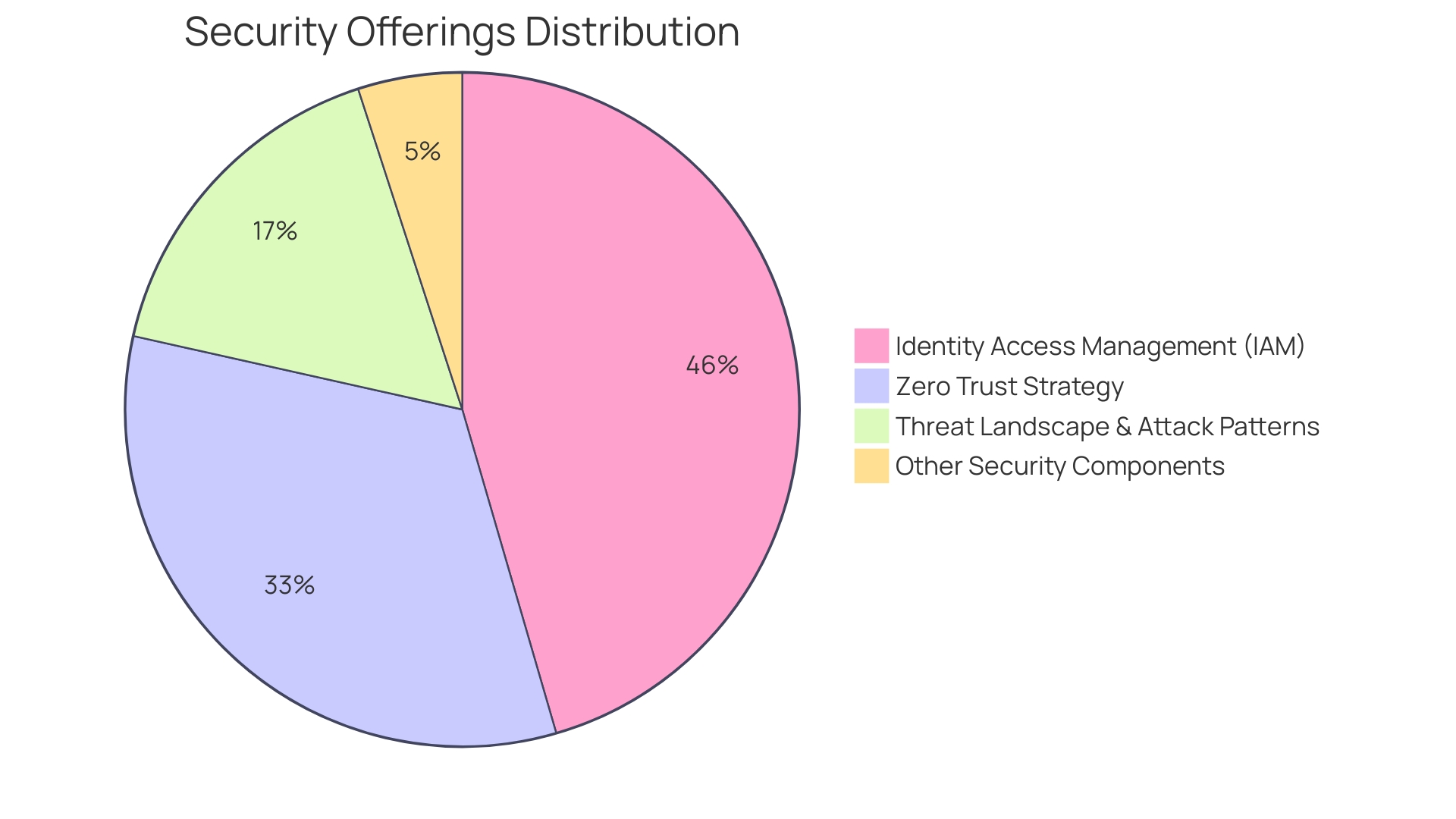
Big Data and Analytics Services Comparison
Big data and analytics are essential in enabling organizations to derive insights and make informed decisions. AWS and Microsoft's cloud platform excel in offering strong solutions for these objectives. AWS's suite includes Amazon EMR for processing large datasets, Amazon Redshift for data warehousing, and Amazon Athena for interactive querying. Azure's equivalents include Azure HDInsight for cloud-based analytics solutions, Azure Data Lake Analytics for on-demand analytics job offering, and Azure Synapse Analytics for boundless analytics platform with unrivaled time to insight.
Real-life examples demonstrate the significance of these offerings. Bosch, for instance, leverages such technologies to enhance green energy efficiency and accessibility, a testament to the role of big data in driving sustainability. Similarly, the TR Labs team's growth and the complexity of their ML innovation underline the need for scalable and manageable data solutions.
Recent developments highlight the continuous evolution of these platforms. AWS has introduced new capabilities aimed at simplifying operations and improving supply chain management, reflecting the platforms' commitment to innovation and customer needs. This is in line with the mass amount of data collected and utilized globally, often referred to as 'big data', which is indispensable across industries for shaping business strategies and community development.
The selection of a platform should be guided by specific business requirements and objectives, with consideration for factors such as budget, security, scalability, and integration capabilities. As AI technologies become increasingly integrated into various business applications, it's crucial to define metrics and objectives to determine scope, scale, and desired outcomes. As a result, this will impact the selection of infrastructure and software for storing, processing, and analyzing data, whether on-premise, in the sky, or a hybrid approach.
To sum up, both AWS and another cloud platform offer extensive and constantly evolving solutions that enable companies to efficiently handle and examine large amounts of data, fostering creativity and meeting market needs. The right platform for an organization will align with its strategic goals, enabling better decision-making and enhanced collaboration across teams.
Machine Learning and AI Services Comparison
As organizations increasingly seek to harness the power of data and automate processes, machine learning and artificial intelligence (AI) are becoming pivotal in various industries. AWS and another well-known cloud platform offer comprehensive machine learning and AI capabilities designed for various applications. AWS's offerings include Amazon SageMaker, which streamlines the creation, training, and deployment of machine learning models, alongside Amazon Rekognition and Amazon Lex, which specialize in visual recognition and conversational interfaces respectively. On the other hand, Azure offers its Azure Machine Learning for effortless model building, Azure Cognitive Services for AI capabilities across vision, language, and decision-making, and Azure Bot Service for intelligent, serverless bot development.
The abilities of these offerings are not only theoretical but are demonstrated in real-world applications. For instance, MATLAB's integration with Amazon SageMaker highlights the practical benefits of cloud-based machine learning, bringing a traditionally desktop-centric tool into the realm of cloud computing with potentially vast improvements in scalability and collaboration. Similarly, Aviva, a leading insurance company, leverages machine learning across more than 70 use cases, demonstrating the technology's multiplicity of applications and its transformative impact on traditional industries.
Moreover, integration of AI in business operations is not just a trend but a competitive necessity. It's reported that AI is adopted in marketing and sales by 34% and in product or solution development by 23%, indicating a significant shift towards AI-driven innovation and customer engagement. Companies are becoming cognizant of the fact that keeping pace with AI is essential to remain competitive in an AI-driven world. Therefore, the evaluation of machine learning and AI offerings by AWS and Azure is not only technical but primarily strategic for businesses aiming to enhance operational efficiency and foster innovation. This analysis will delve into their attributes, training capabilities, and integration options to provide a comprehensive understanding of how these offerings can be utilized to meet organizational objectives.
Pricing Models and Cost Comparison
Comprehending the intricacies of pricing is vital for organizations when choosing a cloud solution provider. AWS and Azure, two of the leading platforms, offer a variety of pricing models to accommodate the diverse needs and usage patterns of their clientele. These models are designed to ensure that organizations only pay for the resources utilized.
To begin, it's essential to distinguish between price and cost. Price is the rate charged for a service and is applied to a Stock Keeping Unit (SKU), which is the fundamental unit of purchase. Price can be listed as either list price, which is the standard base rate inclusive of any basic discounts, or contracted/custom price, which encompasses negotiated discounts specific to an organization. Cost, on the other hand, is determined by multiplying the consumption of a product by its price, reflecting the actual expenditure based on usage.
Both AWS and another cloud computing service continually evolve their pricing structures, providing list and contracted prices to align with market demands and the specific needs of businesses. For instance, AWS's recent unveiling of S3 Express One Zone for frequently accessed data, which offers up to ten times the speed at potentially lower costs, demonstrates the advancements in storage solutions and pricing efficiency.
When choosing between AWS and Azure, several key factors should be considered:
-
Evaluate Your Needs: The requirements of your project, such as machine learning capabilities or IoT integration, should guide your platform choice. For projects that are heavily integrated with Microsoft services, Azure might be the go-to, whereas AWS may be preferable for its extensive features and scalability.
-
Security and Compliance: Both platforms offer robust security, but compliance needs specific to your industry may influence your decision.
-
Flexibility and Scalability: The ability to scale services in response to your project's growth and the alignment of pricing models with your budget are critical considerations.
Data transfer costs, also referred to as data egress fees, are another aspect of pricing in the computing environment that can greatly affect the overall cost. This pertains to the charges incurred when data exits a provider's network. Usually, providers of online services will bill for outbound traffic based on the amount of data transferred, measured in gigabytes or terabytes. Therefore, understanding how egress fees are structured is vital to managing overall expenses in the computing environment.
By being aware of these pricing and cost considerations and utilizing cost management tools and calculators provided by AWS and another provider, organizations can enhance their spending prediction and optimize their investment in the cloud, guaranteeing a more cost-efficient and customized experience.
Data Center Infrastructure and Geographic Reach
With a rapidly expanding digital economy, the strategic placement and robustness of data center infrastructure are vital for service providers in the digital realm. AWS and another leading platform, two, have established a powerful global presence with strategically located data centers to ensure high availability and reduced latency for their users. AWS showcases a vast network with 26 geographic regions, 84 availability zones, and 12 additional ones on the horizon, while Azure is not far behind, with a presence in over 60 regions worldwide, more than any other provider, and continues to grow.
The importance of these data centers cannot be overstated. They are the foundation of internet-based services, hosting vital elements like routers, switches, servers, and firewalls that uphold crucial applications and data storage. Moreover, the physical and IT infrastructure of these centers is meticulously designed to uphold continuous operation and to adhere to stringent regulatory requirements, like the GDPR, which governs data protection in the EU.
These facilities are not only crucial in running day-to-day operations for businesses but are also a testament to the dedication of providers to meet the growing demand for computing power. The industry is witnessing a surge in semiconductor demand due to advancements in AI, a trend that is prompting significant investments, such as HPE's acquisition of Juniper to bolster data center networking capabilities.
While navigating the intricacies of data center operations, companies must consider aspects such as server rack sizing to optimize efficiency, the increasing cost and environmental impact of energy usage, and advancements that could reduce the reliance on remote AI services. In light of these challenges, the scalability of data center components, including cooling and power systems, is under scrutiny to ensure that these assets do not become obsolete or 'stranded' in an ever-evolving technological landscape.
Despite automation being a hot topic, certain aspects of data center management still require the human touch. The interplay between automated processes and skilled personnel is crucial in maintaining the meticulous operation of these vital facilities. With the U.S. government rolling out substantial subsidies to fortify the semiconductor industry and the prospect of the world's largest chipmaking cluster, the future of data centers is poised to adapt to the ever-increasing demands of the digital age.
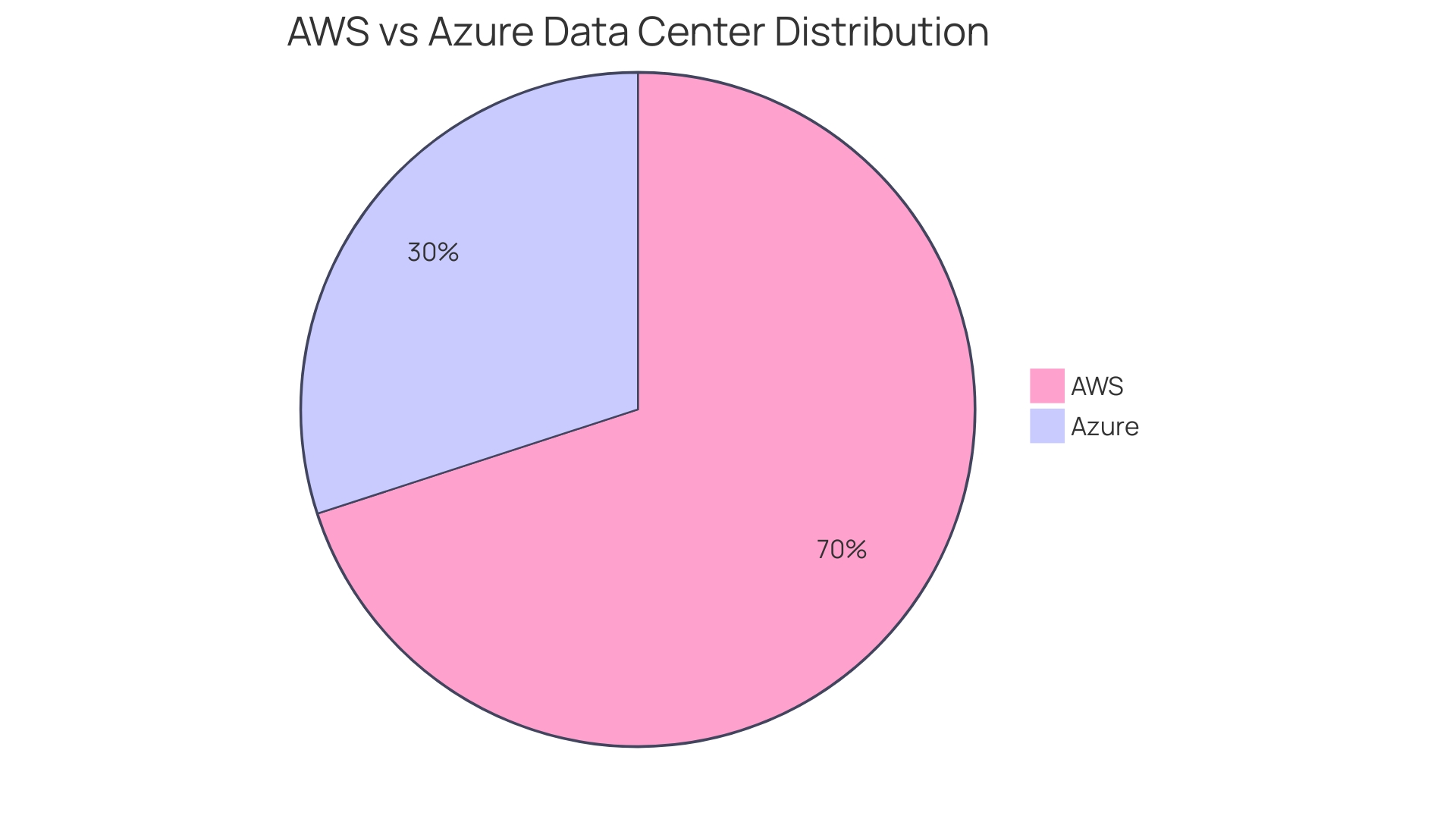
Use Cases and Industry Suitability
Cloud computing has become a critical component for various industries, each with distinct needs and objectives. AWS and other leading providers of cloud computing services offer tailored solutions that enhance IT productivity, drive business innovation, and harness advanced technologies like generative AI across a wide range of sectors, including healthcare, finance, and manufacturing.
In the healthcare sector, the integration of AI is projected to yield a 44 percent surge in labor productivity by augmenting workflows and improving outcomes. AWS and another leading provider are at the forefront of this revolution, providing platforms for fraud detection, quality assurance, and medical imaging review. The use of natural language processing tools, for instance, is improving the accuracy of risk scores for health plans, which is vital for resource allocation and reimbursement processes.
The financial industry also benefits from computing's potential to manage vast datasets and execute complex calculations rapidly, leading to more informed decision-making and better risk management. AWS and Azure's capabilities enable institutions to navigate the intricate landscape of compliance regulations while safeguarding sensitive data.
Manufacturing enterprises utilize cloud-based services to enhance supply chains, anticipate maintenance needs, and innovate in product design. The scalable nature of computing in the sky allows for efficient responses to market demands and the integration of IoT technologies for real-time analytics.
The strategic value of adopting cloud technology is evident across these industries, and organizations are urged to carefully plan their migration journeys to maximize their return on investment. With the expanding role of the cloud computing technology, it is crucial for companies to consider how each platform aligns with their specific industry requirements and the potential pathways to achieve their desired ROI trajectory. By leveraging the capabilities of AWS and other cloud services, businesses can unlock new opportunities for growth and competitive advantage.
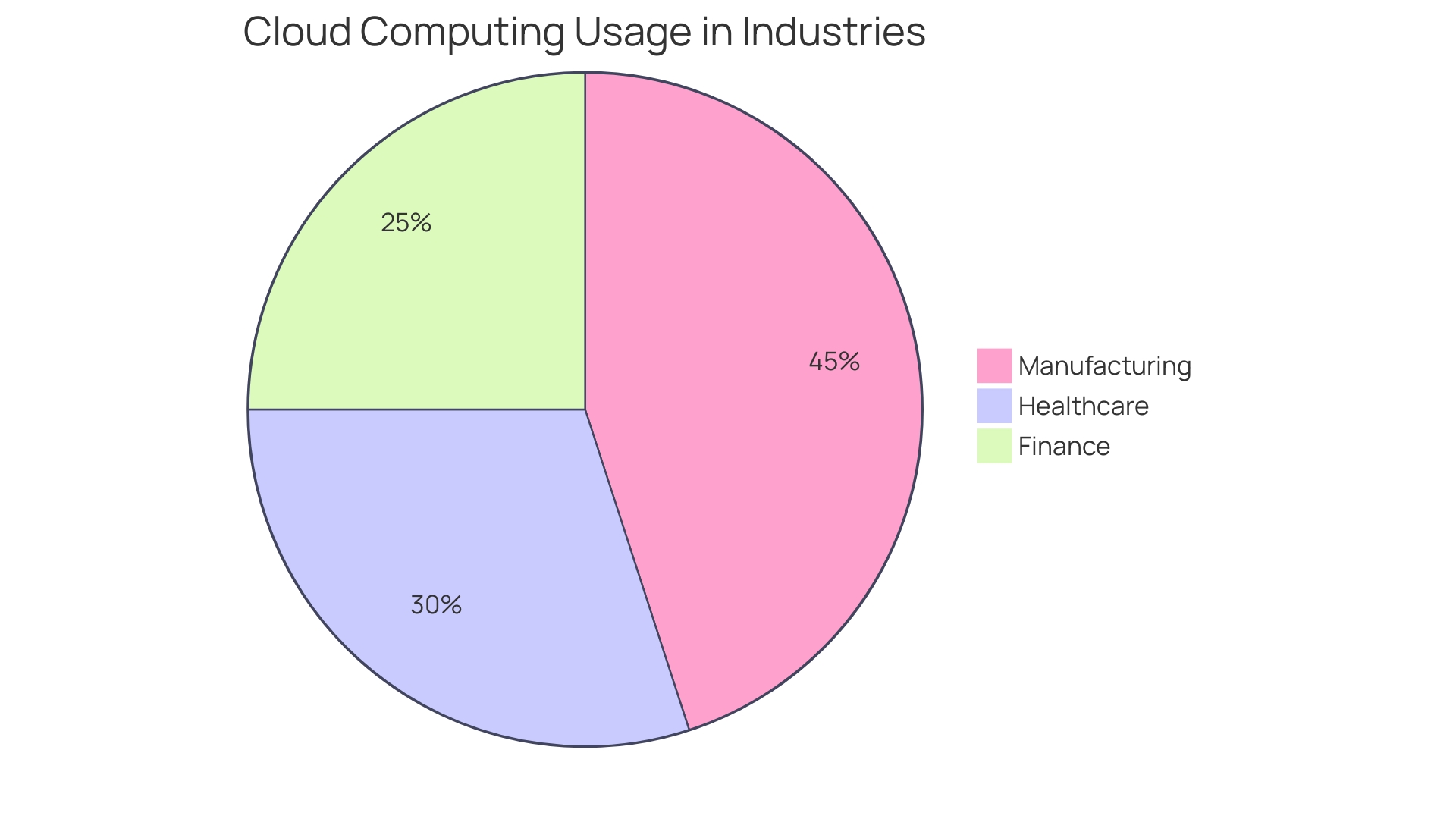
Hybrid Cloud Solutions and Integration
Organizations globally are adopting hybrid strategies, merging on-premises infrastructures with public services to achieve a balance of control and scalability. AWS and Azure are at the forefront of providing robust solutions for these hybrid environments, each offering unique networking options, management tools, and deployment models that cater to various business needs.
For example, Chess.com, which provides more than ten million daily chess games for a worldwide community of over 150 million users, utilizes a hybrid strategy to deliver a smooth experience. James Kelty, Chess.com's Head of Infrastructure, emphasizes the significance of a stable IT infrastructure that integrates public computing and on-premises solutions to connect players worldwide. Similarly, Knorr-Bremse, a leading manufacturer of safety-critical vehicle systems, transitioned to a cloud-first approach with Azure, aiming to eliminate datacenter costs and take advantage of cloud infrastructure for strategic growth.
As per recent reports, an overwhelming majority of organizations (78%) are now opting for hybrid and multi-cloud strategies. Significantly, 43% utilize a combination of on-premises and off-site infrastructure. This trend is a testament to the growing recognition of the benefits offered by cloud technology, which include enhanced flexibility, scalability, and cost-efficiency.
Both AWS and Microsoft's cloud platform have acknowledged the necessity of aiding providers in minimizing operational intricacy and expenses. AWS, for example, has been crucial for companies like Alianza in creating comprehensive communications experiences in the cloud, enabling providers to retain control over customer experiences while fostering innovation and agility.
When choosing between AWS and another provider for hybrid computing needs, organizations should take into account their track record of achievement, security measures, and service alignment with their objectives. Comprehensive assessments and bespoke integration strategies are essential to ensure seamless transitions and long-term scalability, security, and efficiency.
Arc, for instance, offers centralized management across on-premises and servers, including those on AWS, from a single interface, as embraced by the World Bank to manage their vast SQL Server investments. The decision between AWS and another cloud computing platform ultimately depends on specific business requirements and the strategic direction set by each organization for their technology landscape.
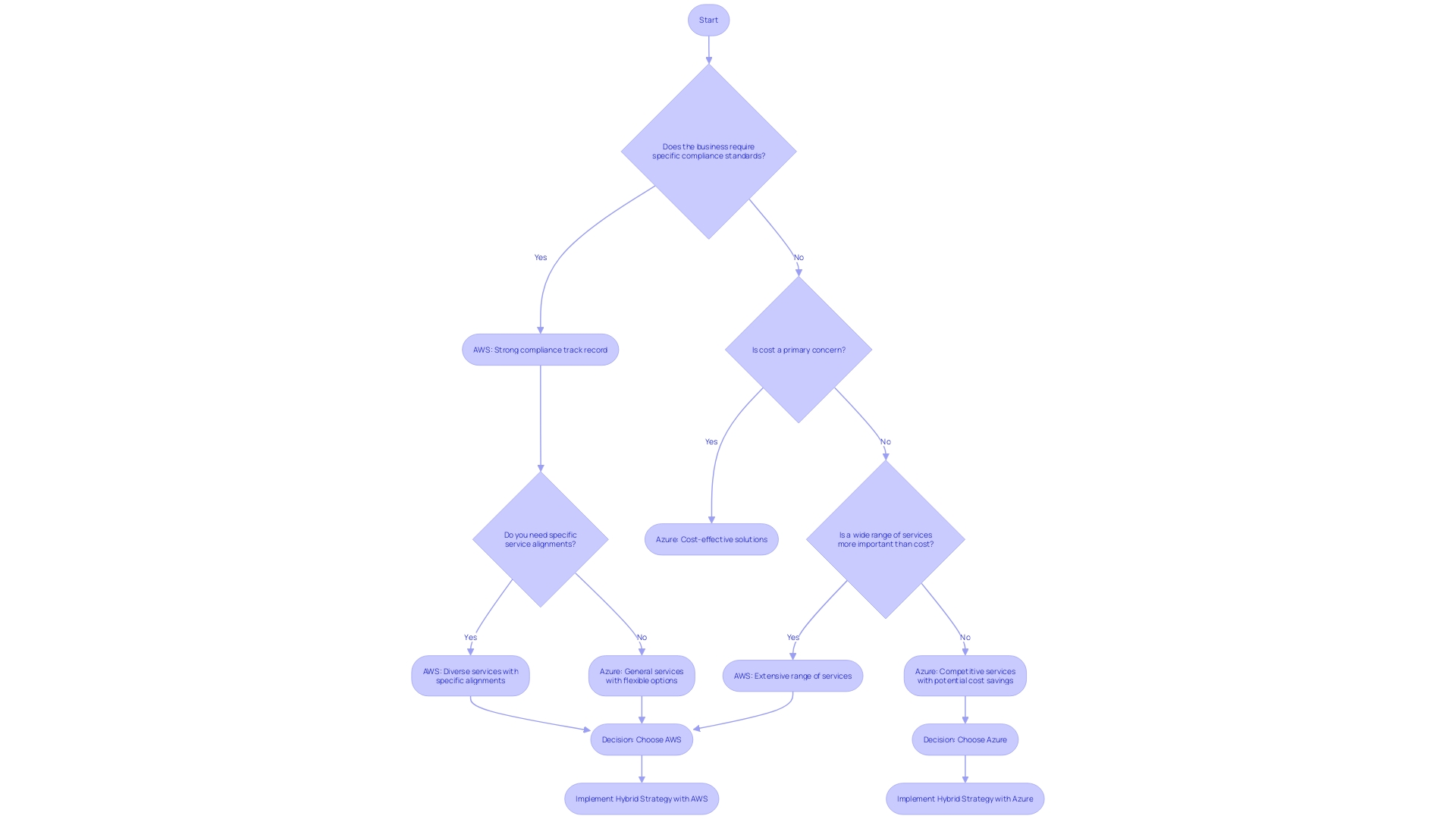
Open-Source Support and Community Engagement
The incorporation of open-source software into the cloud computing environment is a crucial element of its ecosystem, with AWS and other platforms playing crucial roles in supporting open-source technologies and fostering engagement within the community. Both platforms offer an extensive range of open-source tools and frameworks, contributing significantly to open-source projects, thus enhancing their attractiveness to developers, and bringing fresh perspectives and innovations to the field.
The dedication of AWS and another cloud computing platform to open source is evident in their backing of initiatives such as the Turing Way, a guide driven by the community that promotes responsible data science, highlighting the significance of reproducibility, ethical research, and collaboration. This project, backed by The Alan Turing Institute, has amassed contributions from over 450 individuals from various global organizations, showcasing the power of community in advancing open source.
Furthermore, events such as OpenSearchCon Europe and FOSDEM demonstrate the active involvement AWS and another cloud provider have with the open-source community. These platforms not only review and contribute to the source code but also encourage feedback and collaboration, demonstrating their dedication to the open-source ecosystem.
Open-source software's role in innovation is significant, as noted by industry experts who state that companies relying on software must align with open-source principles to succeed. This alignment is evidenced by the thriving businesses built around open-source software in the sky, meeting the needs of data professionals and developers.
Security in open-source is another focal point, with AWS recently launching dedicated resources like AWS Open Source Security and Open Source Cryptography. These initiatives underscore the importance of good citizenship within the open-source community and the collective effort to enhance security posture, particularly in the fast-paced realm of AI.
The 2024 OSSRA report underscores the ubiquity of open-source components in software, emphasizing the necessity for organizations to maintain visibility into their open-source usage to mitigate potential security or license risks. The creation and maintenance of a Software Bill of Materials (SBOM) are recommended as essential first steps for teams to manage their open-source components effectively.
In conclusion, AWS and the engagement of another cloud computing platform with the open-source community, their support for open-source projects, and commitment to security and collaboration, align with the broader industry movement towards open-source innovation and responsibility. With open-source being integral to the cloud ecosystem, their continued support is likely to drive further advancements and community growth in the years to come.
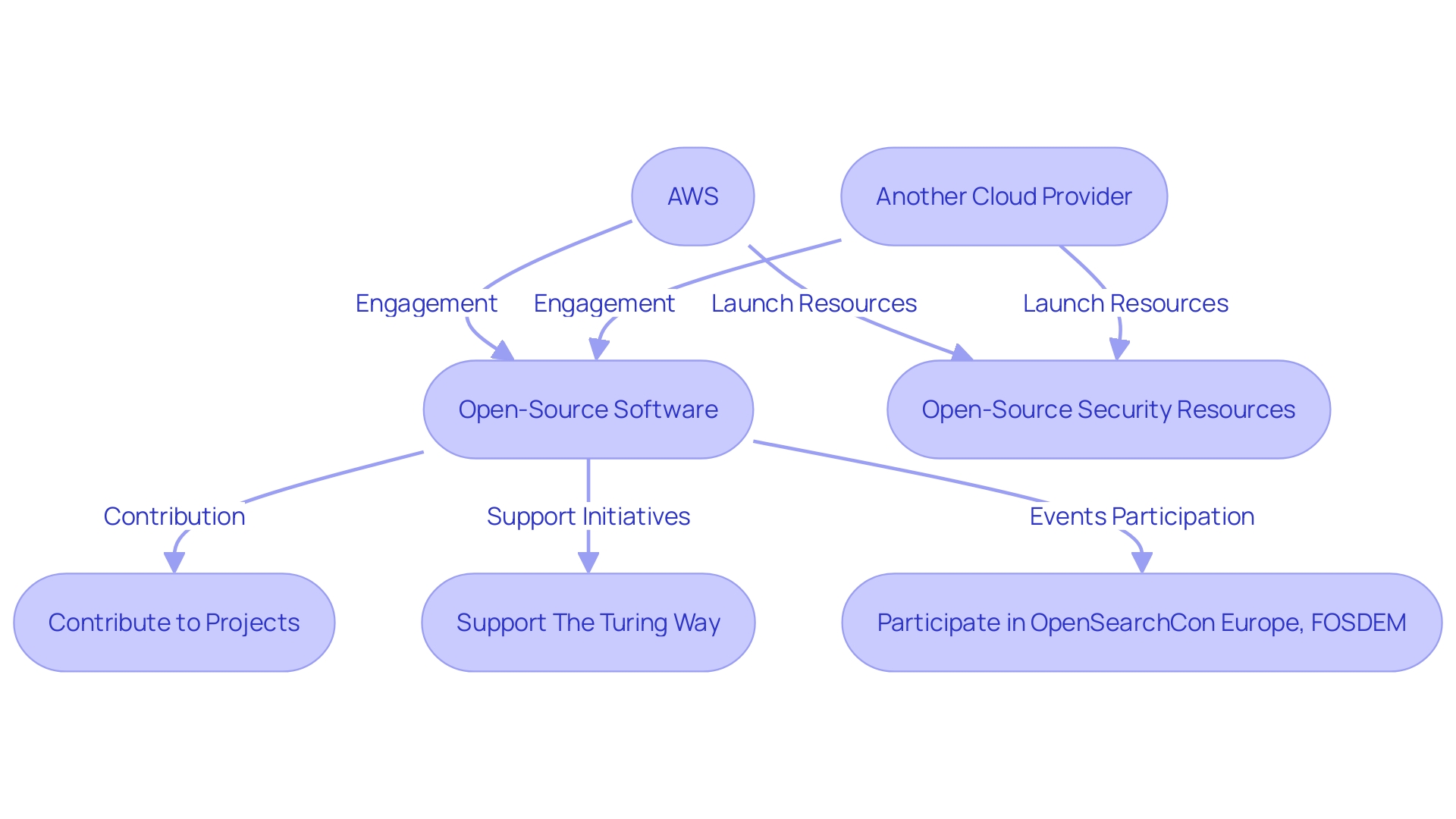
Compliance and Regulatory Considerations
Ensuring adherence to industry regulations and data protection laws is paramount for any organization, especially those working with sensitive information or within regulated sectors. Cloud service providers AWS and another cloud provider are acutely aware of this necessity and have developed robust compliance programs. AWS's commitment is exemplified by its creation of over 100,000 jobs in the EU and the establishment of key AWS development teams in Dublin, Dresden, and Berlin. The AWS European Sovereign Cloud signifies a deeper investment in compliance, catering to customers who require the highest levels of data residency and protection. Similarly, the platform offers comprehensive tools for data privacy and governance, enabling organizations to maintain control over their data and ensure it is handled in accordance with regulatory requirements.
Both AWS and another cloud provider have addressed the complexities of compliance, as seen in their support for the General Data Protection Regulation (GDPR). The GDPR, which emphasizes data residency, data minimization, and storage limitation, is a cornerstone of EU data protection efforts. AWS and Microsoft's cloud platform provide offerings that are in line with these protocols, emphasizing their ability to manage personal data while adhering to the requirements of the GDPR. This is critical for organizations operating in the EU, such as those in the pharmaceutical industry, which face stringent regulatory demands throughout the drug development and approval process, including the production of the Common Technical Document (CTD) for FDA submissions.
The recent developments around the European Data Act, which will take effect in September 2025, have further highlighted the importance of data sovereignty. It mandates improved conditions for cloud service interoperability and the movement of data across services without costs, a move both AWS and another cloud service provider are well-positioned to support.
In light of these considerations, CTOs evaluating AWS and Azure must consider not only the certifications that each platform offers but also their capabilities to assist with audits, the ease of data portability, and how they can support an organization's compliance with specific regulations such as the GDPR and the forthcoming European Data Act. The strategic investment in compliance infrastructure, like the AWS European Sovereign Cloud, signals AWS's commitment to meeting the needs of organizations navigating the complex regulatory environment in Europe.
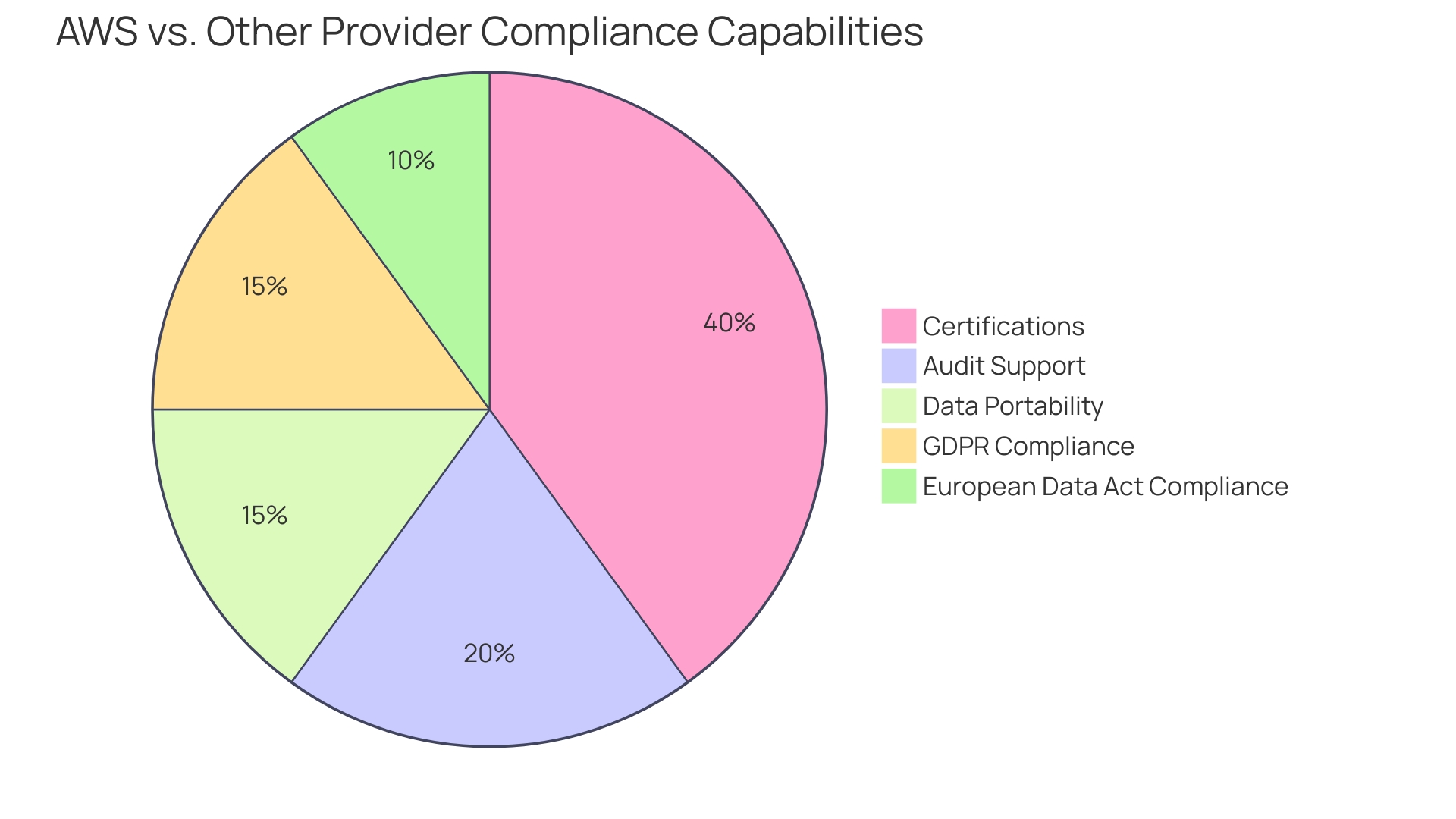
Conclusion
In conclusion, AWS and Azure are leading cloud computing platforms that offer comprehensive services to meet diverse business needs. They provide robust compute, storage, database, networking, security, big data and analytics, machine learning and AI services. Both platforms cater to various industries and offer solutions tailored to specific requirements.
AWS's Elastic Compute Cloud (EC2) and Azure's Virtual Machines (VMs) provide flexible and scalable compute options. AWS's Simple Storage Service (S3) and Azure's storage solutions offer scalable and cost-effective storage. AWS's Amazon RDS, DynamoDB, and Redshift compete with Azure's Azure SQL Database, Cosmos DB, and Synapse Analytics in the database space.
For networking, AWS's Amazon VPC, Elastic Load Balancing, and Direct Connect are complemented by Azure's Virtual Network, Load Balancer, and ExpressRoute. Both platforms prioritize security and identity with services like IAM, KMS, Firewall Manager (AWS), and Active Directory, Key Vault, and Security Center (Azure).
AWS and Azure excel in big data and analytics, offering services like Amazon EMR, Redshift, Athena (AWS), and HDInsight, Data Lake Analytics, Synapse Analytics (Azure). They provide extensive machine learning and AI services such as Amazon SageMaker, Rekognition, Lex (AWS), and Azure Machine Learning, Cognitive Services, Bot Service (Azure).
Pricing models and cost considerations are important factors in selecting a cloud provider. AWS and Azure offer various pricing options, and organizations should evaluate their needs and budget constraints.
Data center infrastructure and geographic reach are crucial for high availability and reduced latency. AWS has an extensive global network, and Azure has a presence in over 60 regions worldwide.
Both platforms support open-source software and engage with the open-source community, fostering innovation and collaboration. They also prioritize compliance and regulatory requirements, offering robust programs to ensure data protection and adherence to regulations.
By understanding the offerings of AWS and Azure, organizations can make informed decisions to leverage the power of cloud computing and drive efficiency and innovation in their operations.




